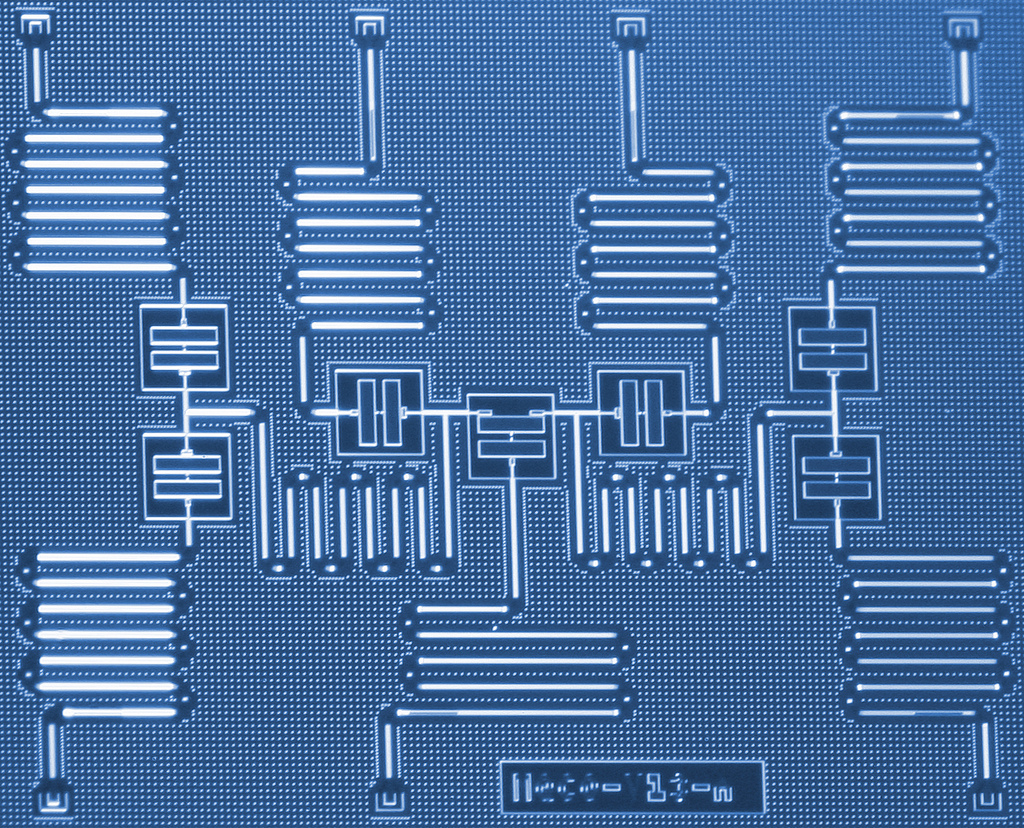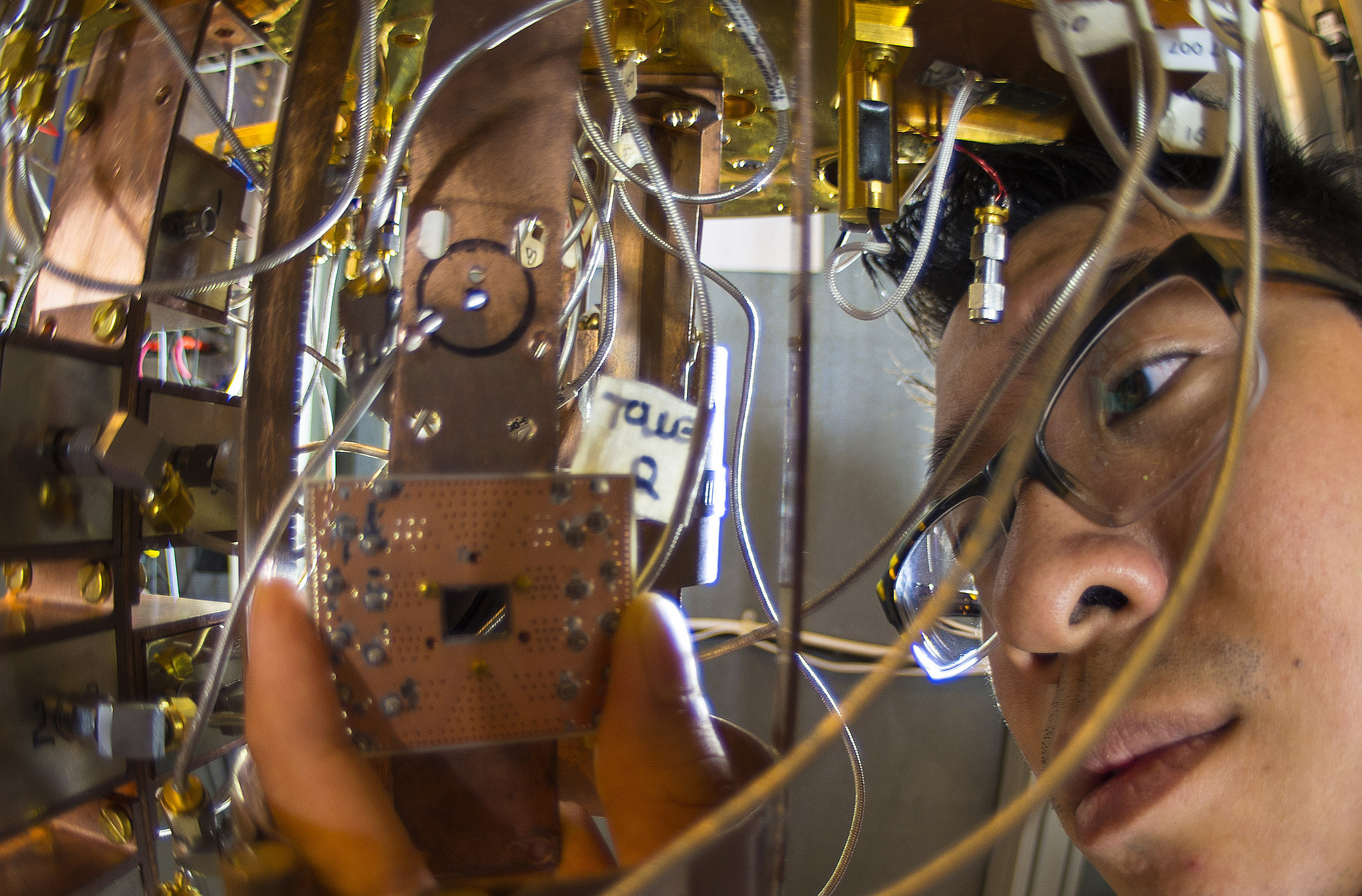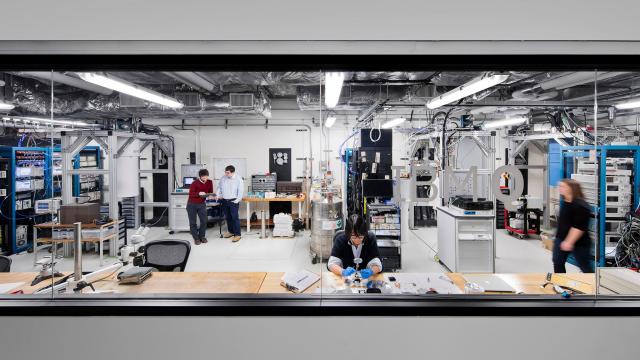As cool as they sound, quantum computers will probably not be best suited for designing websites or making pretty word processors. Instead, their quirky bits may one day be used to solve special algorithms, for artificial intelligence applications, or to model things that actually follow the wild rules of quantum physics. One day.
Image: IBM Research/Flickr
IBM scientists now report using a simple quantum computer to solve some bigger science problems: They have modelled the chemistry of atoms larger than the simplest two, hydrogen and helium. Researchers hope that one day these kinds of computers will be able to simulate even larger molecules, something that could have important applications in discovering new drugs. We’re still in the early stages of quantum computing and it’s likely competitors will beat out this research soon, but the new work is certainly an advance.
The researchers’ experiments demonstrate that a special kind of quantum physics problem solver “implemented on a six-qubit superconducting quantum processor is capable of addressing molecular problems beyond period I elements,” such as hydrogen and helium, “up to BeH2,” beryllium hydride, according to the paper published online earlier this week in the journal Nature.

Quantum computer with seven qubits (Image: IBM Research/Flickr)
Here’s the quantum computing crash course. The basic unit of computing is a “bit”, a yes-or-no switch. Whenever you hear the word “quantum”, you should actually think “probabilities of distinct values”. A qubit, or quantum bit, is a bit that’s yes and no simultaneously, with a probability that it will assume the value of one or the other when you measure it. It’s like a weighted coin before it’s flipped, along with details about its dimensions so you know the probability it will be heads or tails. This is in line with how chemistry actually works; hydrogen is literally just two particles, an electron and proton, with a list of possible distinct properties to describe the system, called a wavefunction. The particles only assume observable properties when, well, they’re observed. The same goes with qubits, which can collapse into one of their two states.
The fact that qubits can fall apart like this means they’re fragile and prone to errors, a major limitation of quantum computers.
The team used something you’d barely recognise as a computer, six working quantum bits represented as superconductors. These are systems that take on quantum properties when they’re cooled in a refrigerator to just above absolute zero. The qubits interact through entanglement, meaning you have to use the same set of probabilities to describe both their values. The system can then read each qubit individually.
Since qubits obey the same laws of quantum physics as molecules, the scientists could directly simulate interactions between particles with interacting qubits. Using their computer, the researchers modelled the behaviour of a few simple molecules with two hydrogen atoms, a lithium atom bonded to a hydrogen atom, and beryllium hydride, a beryllium atom bonded to two hydrogen atoms, according to the paper. They were even able to apply their technique to solve a simple quantum chemistry problem.

Jerry Chow doing big work (Image: IBM Research/Flickr)
Even still, we’re certainly not beating regular computers at these kinds of problems, IBM researcher Jerry Chow told Gizmodo. “This is the best that a quantum computer has done,” he said. But there’s a lot of work to go. “We do see errors right now and we’re not getting the perfect chemical accuracy, but we are starting to explore the field of chemistry on physical hardware.”
There are plenty of other challenges down the road with quantum computers, which as I’ve said previously, are still in the rooms-full-of-vacuum-tubes realm that regular computers were in a long time go.
All of that means that a lot of people are working on problems like these. Harvard University researcher Alán Aspuru-Guzik told Chemical & Engineering News that other competitors may soon take the lead. But Chow said that isn’t a problem. “The whole community will find better ways to handle errors and I think that will be really exciting.”
[Nature]
